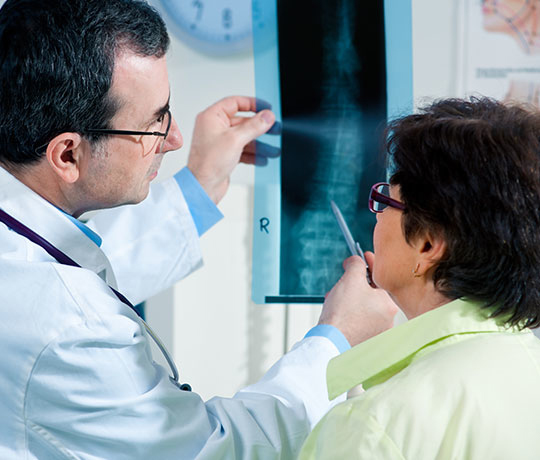
Orthotists at UT Health San Antonio offer personalized, comprehensive treatment plans for a wide variety of scoliosis presentations. We ensure that the orthotic design is customized specifically for you and provide various patterns to personalize your orthosis.
Scoliosis causes the spine to exhibit abnormal lateral curve(s). Orthotists at UT Health San Antonio primarily use the Boston-style thoracic-lumbar-sacral orthosis (TLSO) and Providence nocturnal TLSO for orthotic treatment of scoliosis due to their consistent, clinically proven results. Idiopathic scoliosis may progress during the “growth spurt” years, but it usually does not progress during adulthood. For this reason, it is important to initiate orthotic treatment for scoliosis before the patient reaches skeletal maturity. The goal of orthotic intervention for scoliosis is to prevent the spinal curvature from progressing. It is important to adhere to the provided wear schedule and follow up with your physician and your orthotist during treatment so that adjustments can be made to the orthosis as you continue to grow.
There are three common types of scoliosis:
- Congenital scoliosis: a congenital condition caused by a bone abnormality at birth
- Neuromuscular scoliosis: a condition that also affects the muscles and nerves, often associated with a diagnosis of spina bifida or cerebral palsy
- Idiopathic scoliosis: the most common type of scoliosis. Idiopathic scoliosis may be diagnosed when the patient an infant (birth to age 3), juvenile (ages 4 to 10), or adolescent (age 10 to age of skeletal maturity). The word ‘idiopathic’ means that the cause is unknown.
Make an Appointment
Please call 210-450-6470 to make an appointment.
Our Practice Locations
UT Health San Antonio Main Campus - Medical Center
7703 Floyd Curl Drive
6th Floor, Room 638E
San Antonio, TX 78229
Texas Diabetes Institute - Downtown
701 S. Zarzamora
2nd Floor, Room 2120
San Antonio, TX 78207